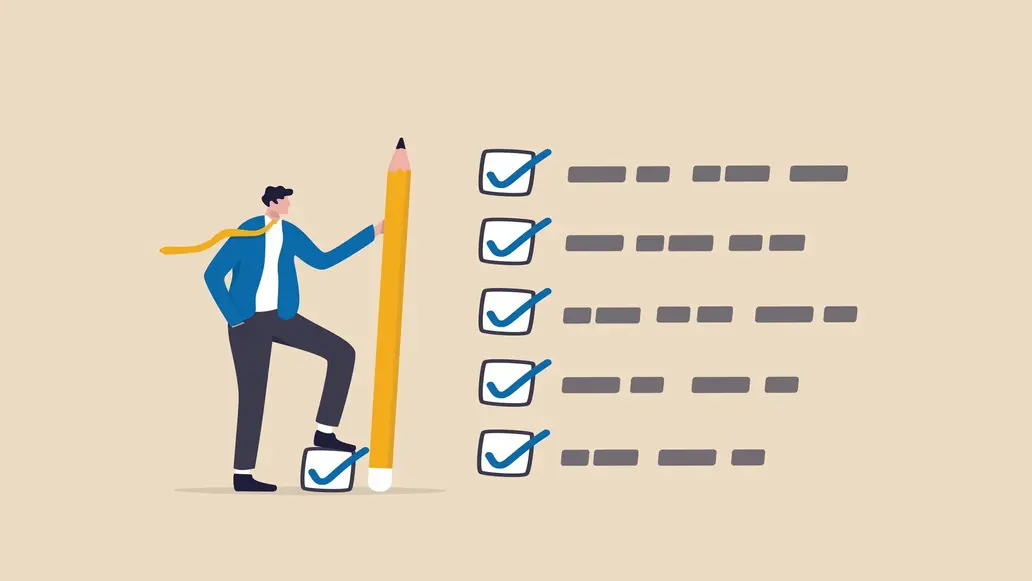As the working population continues to decline due to the declining birthrate and aging population, many companies are eager to acquire talented human resources. Many companies may be considering specific strategies to fill in the shortage of human resources or strengthen the skills of their employees.
If you use a “skill map” when organizing employee skills, it will be useful as a resource for human resource development and human resource evaluation, and will enable smooth human resource management. In this article, we will explain the advantages and disadvantages of introducing skill maps, as well as how to create them and precautions. If you are a company that wants to properly manage your human resources and make your personnel operations more efficient, please use this as a reference.
Table of contents [ hidden ]
- 1. What is a skill map?
- 2. Purpose of introducing skill maps
- 3. Benefits of introducing skill maps
- 4. Disadvantages of introducing skill maps
- 5. How to make a skill map
- 6. Points to note when using skill maps
- 7. It is important to be aware of the skill map after creating it.
1. What is a skill map?

A skill map is a list that summarizes and visualizes the skills possessed by employees and teams. This information can be used for human resource development and personnel evaluation systems, since it is possible to see who possesses what abilities and to what extent.
Additionally, since it is possible to understand the skills that are lacking in the company as a whole, it is also useful in recruiting human resources to fill in the gaps.
2. Purpose of introducing skill maps

There are three main purposes for introducing skill maps:
- To visualize in-house skills
- To improve employee motivation
- to grow the organization
2-1. To visualize in-house skills
By introducing a skill map, you can visualize what skills your employees have. Skill maps allow executives and managers to understand employee skills and can be used for management purposes.
2-2. To improve employee motivation
Another purpose of introducing skill maps is to improve employee motivation. By visualizing their own skills, employees can also understand their own strengths and weaknesses. For example, if employees can understand their own weaknesses, they will be motivated to grow and improve their motivation.
2-3. To grow the organization
Skill maps are also effective for organizational growth. Skill maps allow you to understand what skills are possessed not only by each employee, but also by each organization. Being able to see what is lacking as an organization from a bird’s-eye view will lead to the growth of the entire organization.
3. Benefits of introducing skill maps

The benefits of implementing skill maps are as follows.
3-1. Employee skills can be seen at a glance
Skill maps allow you to visualize employee skills, so you can see at a glance who has what skills.
By being able to easily understand skills, you will be able to identify departments and positions within your company where those skills can be utilized, which will help you optimally allocate human resources. Additionally, it can be used to determine whether a company has a surplus or shortage of skilled workers, which will be useful in formulating future recruitment plans and management strategies.
3-2. Can be expected to increase motivation
Sharing a skills map with your employees will help them understand their own strengths, which will boost their confidence. Also, since you can check each other’s skills, you can expect to develop a competitive spirit. It is possible to improve the motivation of both rivals while working hard together.
Furthermore, by assigning employees to positions that match their skills, they will be able to develop their talents in their areas of expertise, allowing them to work with greater motivation.
3-3. Leads to the growth of employees and the company
By using a skill map, you can understand the strengths and weaknesses of your employees.
It would be a good idea to place them in a position where they can demonstrate their strengths in order to further develop their abilities in their areas of strength. For areas in which you are weak, you can improve your skills by implementing appropriate educational programs and training to improve your abilities as necessary.
Developing both your strong and weak skills will lead to growth not only for your employees but also for your company.
4. Disadvantages of introducing skill maps

While introducing a skill map can lead to increased employee motivation and organizational growth, it can also have the following disadvantages.
- “Visualization” causes resistance from employees with low skills.
- Setting up skills takes time
4-1. “Visualization” causes opposition from employees with low skills
By sharing the skill map with everyone, you can clearly see the skill level of each employee. Although it is good for highly skilled employees, it is possible that less skilled employees may have a negative reaction to the visualization of skill maps.
To prevent this from happening, it would be a good idea to hold interviews with each person and explain the purpose of introducing the skill map, as well as explain how they can improve their skills. Another method of operation is to limit the use of skill maps to the company and not disclose them to employees.
4-2. Setting skills takes time
Creating a skill map requires detailed work such as identifying tasks and defining the level of achievement for each task. The heavy burden on the person in charge can be considered a temporary “disadvantage”.
However, in the long term, the introduction of skill maps has many benefits, such as “improving the efficiency of personnel work” and “growth of employees and the company.”
5. How to make a skill map

When creating a skill map, it is important to create content that suits the company and department. The basic creation procedure is the same, so it will be smooth if you follow the steps below.
5-1. Step 1: Clarify the purpose of introducing skill maps
First, clarify the purpose of introducing the skill map.
The reason is that the “items to be recorded on the skill map” change depending on the purpose. For example, if your goal is to “place the right people in the right places,” clarify the skills required by each department and prepare the items necessary to measure each skill.
On the other hand, if your goal is to develop human resources, consider including items that are linked to autonomy, quality control as a responsible person, and management skills.
5-2. Step 2: Decide on the format to use for the skill map
Next, decide on the format for creating the skill map.
If you want to prepare one for free, you can use an Excel sheet or download a template from the internet. However, Excel sheets require creating a format from scratch, and templates may not meet your company’s implementation objectives.
On the other hand, it is also effective to use a human resources management system that can visualize everything from formulating items to managing skills, although it is expensive to implement.
5-3. Step 3: Classify skill content
Once you have decided on the format to use for the skill map, check the flow of each task and identify the necessary skills. There are many different ways to classify the content of each skill, such as “by work item”, “by product/service”, and “degree of necessity”.
Choose a method for classifying skill content that is appropriate for your company or department.
5-4. Step 4: Set evaluation criteria
Set evaluation criteria for skills in the skill map. For example, in some cases, there are only two options: “Able to do” or “Can’t do,” and in other cases, evaluation criteria are set on a scale of 3 to 5. If there are too few stages in the evaluation criteria, it becomes difficult to understand the level of achievement of employees.
5-5. Step 5: Create a trial operation and manual before implementation
After creating a skill map, we will start a trial operation before implementation. During the pilot period, try to get feedback from the appraiser as well as the employee being evaluated. We will continue to make revisions so that we can give you a fair evaluation.
It is also important to create a manual for operation during trial operation .
6. Points to note when using skill maps

In order to properly utilize a skill map, it is necessary not only to keep the key points in mind when creating it, but also to be careful in its actual operation. Points to note regarding operation are as follows.
6-1. Select an appropriate evaluator
Even if the content of the skill map is appropriate, if the evaluator does not understand the “intention of introducing the skill map” or “the content of each item,” it will not be able to be used appropriately. Therefore, select the person who is suitable for managing the skill map as the evaluator.
Basically, a manager who has a bird’s-eye view of the company or a person in charge of human resources is appropriate. If a suitable person is not available, we recommend implementing training and education programs for managers and human resources personnel, making them aware of the significance of the skill map, and then starting its operation.
6-2. Review the content regularly
As the company’s vision and market environment change, the purpose of using skill maps will also change. Furthermore, even if the purpose does not change, if the internal structure changes due to expansion of company size, etc., the items in the skill map will need to be changed according to the structure.
After preparing a skill map, avoid it from becoming a mere shell by “regularly reviewing” it. In addition to setting a review span, if you feel uncomfortable when using the skill map, you should review it as appropriate.
7. It is important to be aware of the skill map after creating it.

Skill Map is a useful system that allows you to visualize the skills of your employees and teams. By introducing it, you can improve operational efficiency in terms of human resources, such as placing the right people in the right jobs and reducing mismatches in recruitment.
In order to properly utilize skill maps, it is essential to make employees aware that they should always expand their skills, such as by individually following up on employees whose skills are below a certain level. Even for employees who have a certain level of skill, you should implement appropriate training programs and set personal goals in order to improve their skills.
When creating and operating skill maps, we recommend using a system that supports skill management. Not only will it reduce the burden on human resources personnel when creating and reviewing it, but it will also be easier to customize it to suit your company.